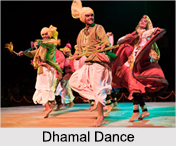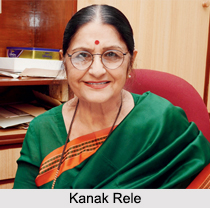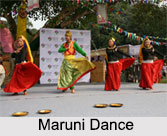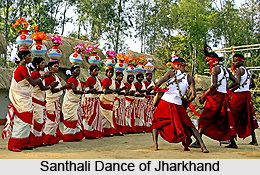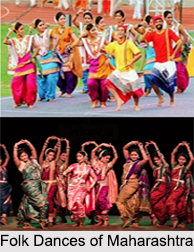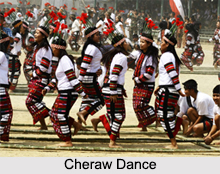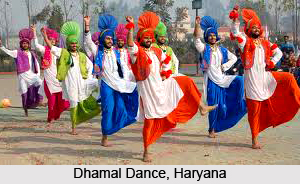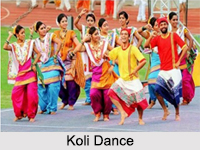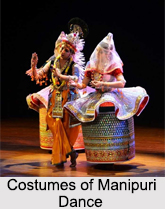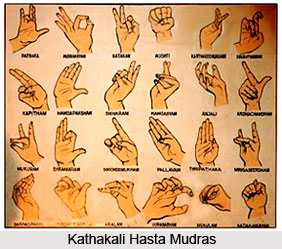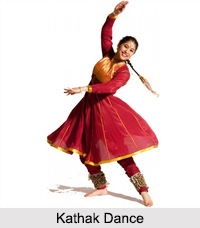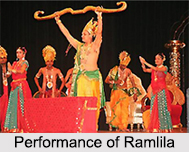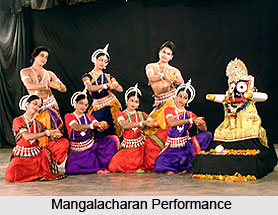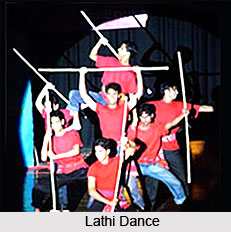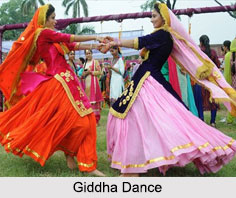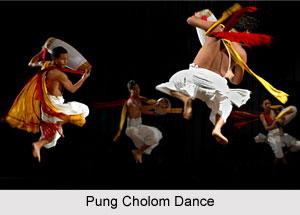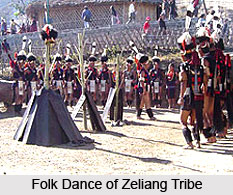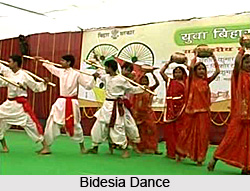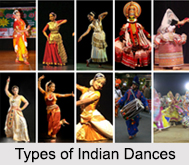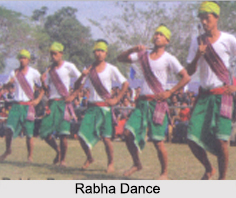Introduction
Panthi dance is one of the important dance forms of Chhattisgarh State of India. This Indian folk dance is basically a prominent ritual of the Satnami community of Chhattisgarh. Panthi Dance is renowned for its vibrant energy, rhythmic beats, and deep cultural significance. The term ‘Panthi’ originates from the local dialect and reflects the traditional essence of this art form. Typically performed during festivals and community celebrations, Panthi seamlessly weaves together dance, music, and storytelling.
Origin of Panthi Dance
The origin of Panthi Folk Dance traces back to the ancient traditions of
Chhattisgarh. Practiced for centuries, this dance form is deeply
embedded in the region’s cultural and spiritual life. It was originally
performed by tribal communities as an expression of worship, joy, and devotion.
Quite obviously, Panthi Dance holds a special place in the tribal heritage of
Chhattisgarh, particularly among the Gond and Baiga tribes. For these
communities, dance serves as a medium of storytelling, through which they
convey their beliefs, rituals, and cultural values. Panthi thus stands as a
vibrant reflection of their spiritual and social traditions.
Theme of Panthi Dance
Panthi dance is very expressive in its depiction and is
performed to the accompaniment of melodious songs. The dance reflects the rich
cultural heritage and traditional legacies of the indigenous tribal groups of
the region. It bears religious overtones and epitomizes the unique dance styles
of the state. The district of Durg has great importance in the
history of Chattisgarh as it has one of the main communities from
the ancient time. Panthi is mainly performed to depict the importance of Durg
district to the people. Performed on Maghi Purnima, the birth
anniversary of Guru Baba Ghasidas, the dance is still evolving to include a
variety of steps and patterns.
Cultural Significance of Panthi Dance
Panthi Dance holds an integral place in the cultural celebrations of Chhattisgarh. Performed during various festivals, it serves as a unifying force that brings the community together to rejoice in their shared heritage. The dance reflects the exuberant spirit of the people and acts as a living reminder of their ancestral traditions and cultural roots.
A distinctive feature of Panthi Dance is its role as a medium of storytelling. Through expressive movements and vivid facial expressions, dancers narrate tales drawn from folklore, mythology, and the lives of Gods and Heroes. This dynamic blend of art and narrative not only entertains but also educates, preserving the timeless stories of Chhattisgarh’s cultural legacy.
Costumes of Panthi Dance
The preparation of the costume
for a Panthi Dance performance involves elaborate traditional attire and
vibrant makeup. Performers wear costumes adorned with intricate patterns and
colorful designs that enhance the visual appeal of the dance. To accompany the
attire, they also wear minimal ornaments. The
costumes represent vibrant and dynamic cultural life of the local inhabitants
of Chhattisgarh Region. With the changing time, a bit of change in their
dresses is also seen. Now-a-days dancer also wear colorful shirts with jackets for
the performance.
Performance of Panthi Dance
It is mainly performed by the male dancers. The performers dance around a Jait-khamb set up for the occasion which resembles a victory pillar. They dance to the songs eulogizing their spiritual guru. The songs also reflect the Nirvana philosophy, conveying the spirit of renunciation of their Guru and the teachings of saint poets like Kabir, Guru Ramdas Ji, Dadu, etc.
A Panthi Dance performance typically begins with dancers forming a circle or semicircle, moving in harmony to the rhythmic beats of traditional instruments. The choreography features a lively mix of coordinated steps, jumps, and turns, all synchronized to the pulse of the drums. Hand gestures and expressive body movements bring dramatic emotion to the performance, adding depth to its storytelling nature.
The accompanying music is distinctly traditional, played on instruments such as drums, flutes, and gongs. The drums set the powerful rhythm, while the melodic tunes of the flutes and the tones of the gongs create a captivating ambience that elevates the energy and allure of the dance.
The performance of this dance requires great flexibility and stamina as it involves various challenging steps. The performance begins with slow body movements. The leader of the group sings a song while the rest follow the refrain. Dancers with bent torsos and swinging arms continue to dance till carried away by their devotion. As the rhythm quickens, they indulge in acrobatics and even form human pyramids. Dancers present various ‘Mudras’ such as Jai Stambh, Dharti Pranam, and Phool Arpan in honor of their Guru or God. The dancers who participate in this dance are usually the people or member of Panthi Nritya Mandir.
Musical Instruments of Panthi Dance
Musicians accompany the dancers, using rhythmic beats and lively tunes to set the tone for an energetic and captivating performance. The dancers mainly dance to the rhythm of traditional folk instruments which comprise of Mridanga and Jhaanj. Mandhar has been the prime musical instrument accompanying this dance form but Banjo, Dholak, Tabla and Casio are also used by musicians. Occasionally, the performers also dance to the loud beats of the indigenous tribal drums.
Evolution of Panthi Dance
Originally performed in villages as a vital part of community festivities, Panthi Dance has gradually moved out of its rural roots to reach urban audiences and cultural festivals across India. While its core essence and traditional values remain preserved, contemporary performances often incorporate new creative elements to resonate with modern viewers, adding freshness without losing authenticity.
Amid this evolution, dedicated efforts are being made to
safeguard the purity of the traditional Panthi Dance of Chhattisgarh. Cultural
organizations and local
communities actively work to preserve its original form through
seminars, workshops, fairs, and training programs. These initiatives ensure
that the rich heritage of Panthi Dance continues to inspire and educate future
generations.
Popularity of Panthi Dance
This Indian folk dance has captured the imagination of rest of the Indian states as well with its unique steps and rhythm. Every year, tourists flock to this state to have a glimpse of the dance during various occasions. The most authentic way to experience the Panthi Folk Dance is by attending local festivals and cultural events in Chhattisgarh. Celebrations such as Bastar Dussehra and Rajim Kumbh Mela showcase skilled performers bringing this vibrant folk dance to life, allowing audiences to immerse themselves in the region’s rich cultural atmosphere.
Cultural centers and organizations across the state also conduct workshops to teach the fundamentals of Panthi, like its steps, rhythms, and techniques. These initiatives not only offer an engaging way to participate in the tradition but also provide valuable insight into one of Chhattisgarh’s most cherished performing arts.
Famous Panthi Dancers
Devdas Banjara is a celebrated Panthi dancer who played a pivotal role in showcasing this traditional art form to audiences across the world. Despite having no formal dance training, he founded a troupe that performed internationally, captivating audiences with their dynamic performances rooted in Chhattisgarh’s tribal heritage. His dedication to preserving and promoting Panthi Dance earned him the Guru Ghasidas Award for his contributions to the Dalit community and the Presidential Award recognizing his troupe’s remarkable achievements in traditional dance. Dressed in traditional ghungroo and kurta, Banjara’s performances became a global symbol of Chhattisgarh’s rich cultural legacy.
Another prominent figure in Panthi Dance, Radhe Shyam Barle, has made significant contributions to preserving and popularizing the art form. In 2021, he was honored with the Padma Shri, India’s fourth-highest civilian award, for his outstanding work in the field of art. Born in 1966 in Khola village of Patan tehsil, Durg district, Chhattisgarh, Barle has devoted his life to promoting the teachings of Baba Guru Ghasidas through Panthi performances.
A qualified MBBS doctor and a diploma holder in folk music
from Indira Kala Sangeet Vishwavidyalaya, Barle is also a regular performer on
Doordarshan and All India Radio. He has represented Chhattisgarh in numerous
cultural festivals across India and received multiple honors, including the
Devdas Banjare Award, Guru Ghasidas Social Consciousness Award, Dalit
Upliftment Award, Kalasadak Samman, Dr. Bhawar Singh Tribal Seva Samman, Social
Harmony Award, and Dau Mahasing Chandrakar Award. Through his work, Barle
continues to keep the spirit and message of Panthi Dance alive for future
generations.
